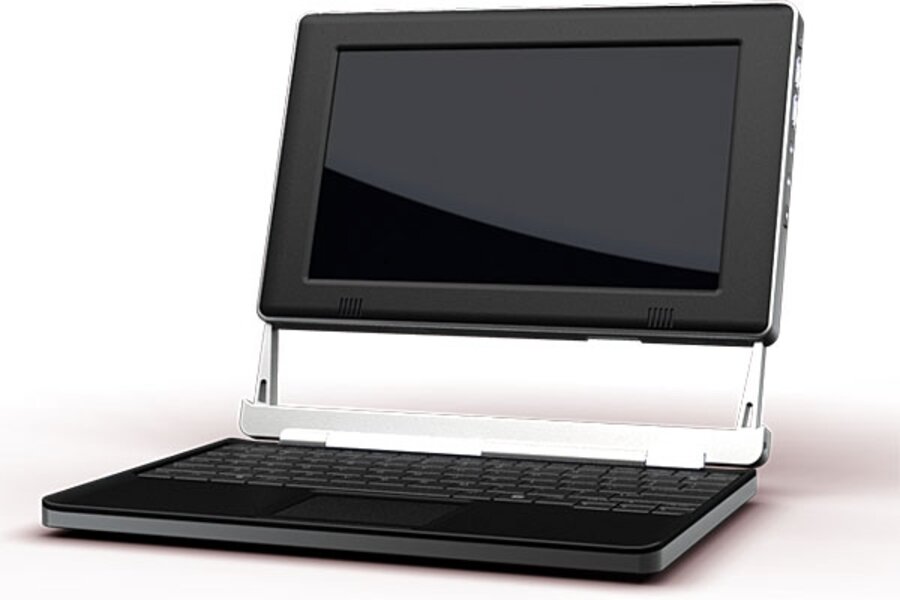Want list: Always Innovating's Touch Book
Loading...
Every once in a while a product is released that changes the game, breaks the mold, flies in the face of convention. The iPhone comes to mind, as do Tivo, the Slingbox, and the Roomba.
The Touch Book from Always Innovating won't sweep your floors or record "Lost," but it has the potential to shift the way we think about computers.
With its mobile-optimized ARM processor housed in an 8.9-inch touch-screen display, the computer pulls a pretty nifty trick. It loses its head. Use it like a laptop, as an easel, or as a tablet. Or put its magnetic back to use and hang it on your fridge. It's part netbook, part tablet PC, part something completely new. Call it a Frankengadget.
And its form-factor isn't the only thing dropping jaws. Its price tag, starting at $299, puts it in line with iPods and iPhones – and it's a tank of gas and snacks cheaper than Amazon's Kindle 2.
Battery life, too, is pretty astounding, at least on paper. When's the last time a laptop went 10-15 hours without needing a charge? The expected 802.11b/g/n wifi and Bluetooth connectivity are included, as is a three-way accelerometer for tilt controls. All of that, including an eight gigabyte flash memory card for storage, is crammed into a 2-lb. package about the size of a standard hardcover book.
Gizmodo saw a prototype of the device and posted a video. They provide some details about the operating system and user interface:
As far as software goes, the OS is based around the Open Embedded Linux platform, but fully customized for the Touch Book hardware. As such, the Touch Book has the power to handle full screen video, and render OpenGL 3D graphics....
The Touch Book UI design depends on what configuration the hardware is in. When docked to the keyboard, the Touch Book uses a standard, cursor-based UI that looks like other Linux desktops. However, when in tablet mode, it uses a custom-designed, touch-based UI. The touch UI is based around spherical icons that rotate in a circular fashion as you swipe to the next one. Content is divided into three categories: web, apps, and settings.
The Touch Book makes its debut at today's DEMO emerging-technology conference in Palm Desert, Calif., and is set to begin shipping by early summer.





